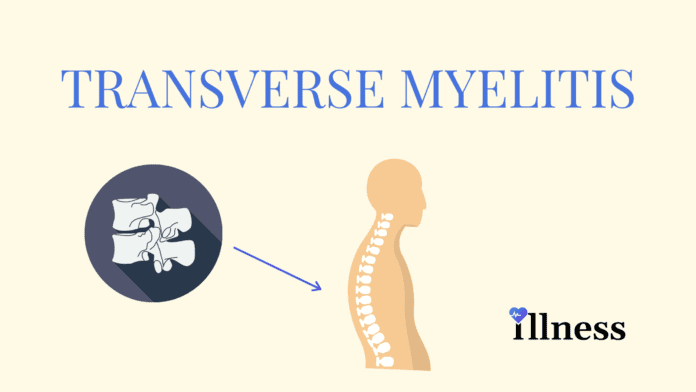Overview Of Acute Transverse Myelitis
Acute transverse myelitis is a condition that occurs when the spinal cord becomes inflamed. This inflammation damages the nerve cells within the myelin sheath (the covering surrounding the spinal cord that helps to protect it).
Acute transverse myelitis can cause paralysis, pain, muscle weakness, and bladder/bowel control problems in those affected.
Commonly Associated With
Idiopathic transverse myelitis, TM, and Secondary transverse myelitis
Causes Of Acute Transverse Myelitis
Acute transverse myelitis is a nervous system disorder that is fairly rare in the general population. The exact cause of transverse myelitis is often unknown.
However, in some cases, certain conditions have been observed to lead to transverse myelitis:
- Immune system disorders, such as Sjögren syndrome, multiple sclerosis (MS), and lupus
- Viral, parasitic, bacterial, or fungal infections, such as enteroviruses, syphilis, Lyme disease, West Nile virus, HIV, varicella-zoster (shingles), and Zika virus
- Blood vessel disorders that directly impact or affect the spine
- Inflammatory disorders, such as scleroderma (a connective tissue disease), or sarcoidosis
Transverse myelitis affects both sexes and all races, and does not appear to have an association with any particular group.
Symptoms Of Acute Transverse Myelitis
Symptoms of acute transverse myelitis can develop within a few hours or days, but they may take up to 1-4 weeks depending on the person. Moreover, symptoms can become very severe in a short amount of time.
The location of the spinal cord damage often determines the location of symptoms, because the areas usually affected are at or below the damaged areas. The condition usually affects both sides of the person’s body equally, but in some cases it affects only one side of the body.
Acute transverse myelitis is associated with several different types of symptoms. These include:
Pain:
- Blunt or sharp feeling pains
- The pains may begin in the lower back area, and then shoot down the legs and arms, or wrap around the chest or trunk area
Bladder and bowel symptoms:
- Incontinence
- Frequent urgent need to urinate
- Constipation
- Difficulty holding in urine
Sexual dysfunction:
- Erectile dysfunction
- Difficulty achieving orgasm (for both sexes)
Muscle weakness:
- Difficulty walking (dragging the feet while walking or stumbling)
- Loss of balance when standing or walking
- Partial loss of body area or limb function, which can develop into paralysis in some cases
Abnormal bodily sensations:
- Increased sensitivity to temperature or touch
- A feeling of coldness
- Tingling
- Burning
- Pricking
- Numbness
Additional symptoms
- Other symptoms can include fever, loss of appetite, and respiratory issues. Anxiety and depression can occur as a result of the person dealing with chronic illness and pain for long periods of time, which can be demoralizing.
Exams & Tests
When attempting to diagnose acute transverse myelitis, a health care provider will take a medical history and ask about any relevant symptoms. They will also perform an examination of the nervous system to check for:
- The patient’s level of pain
- Weakness or loss of their muscle function, such as reflexes and muscle tone
- Abnormal sensations the patient may be experiencing
Tests often used to diagnose acute transverse myelitis and eliminate other possible causes include:
- A lumbar puncture test, also known as a spinal tap
- Various blood tests
- A spinal cord MRI to look for abnormalities or inflammation
Treatment Of Acute Transverse Myelitis
The treatments available for acute transverse myelitis can help to:
- Reduce or relieve symptoms
- Reduce the inflammation in and around the spinal cord
- Treat the infection that may have caused the problem in the first place
The patient may be given:
- Medications that suppress the immune system.
- Plasma exchange therapy, which involves removing the plasma (the fluid portion of the blood) and replacing it with a healthy donor’s plasma or some other fluid.
- Steroid medications to decrease inflammation. These are given intravenously (through an IV inserted into a vein).
- Medications that control other symptoms, such as muscle spasms, pain, urinary issues, or depression.
A health care provider may recommend:
- Occupational therapy to learn new strategies to help with daily activities
- Physical therapy to help improve balance and muscle strength. The use of walking aids may also be recommended.
- Counseling to help cope with the emotional toll and stress of being affected by acute transverse myelitis



